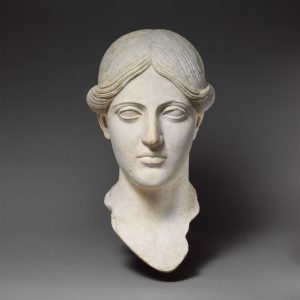
[This blog post was contributed by VRC Staff Alana Barry (International Studies/East Asian Studies, ’22)]
Looking for a way to incorporate images into your teaching? Look no further— all JHU faculty, students and staff have free access to Artstor’s collection of over 2.5 million images. Users can browse public collections and Artstor’s digital library as well as the 185,000 images from JHU’s own Visual Resource Collection. Artstor images can be shared directly with students, added into customizable image groups, and even saved into PowerPoint files for in-class use.
For Classics courses in specific, there’s a great deal of unique and interesting images that can be found and used through Artstor. As an example, Hollins University’s public collection includes images of Greek inscriptions on works of art from the Archaic, Classical, and Hellenistic periods, combining Greek language with ancient artworks. Additionally, Cornell University’s Cast Collection features over 800 images of casts of statues, statuettes, reliefs, and inscriptions, many from ancient Greece and Rome. To get more insight into what Artstor has to offer, check out this link for a curated group of Classics-related images and this link for a sample group of images relating (more specifically) to Roman emperor Augustus. These samples are not comprehensive, but rather represent a small fraction of the Classics-related images Artstor has to offer. You can find more information about each image in Artstor, including a detailed description, location, the collection it comes from, and more.
Feel free to contact the Visual Resources Collection staff at vrc@jhu.edu if you have questions about Artstor or any of our other services!
